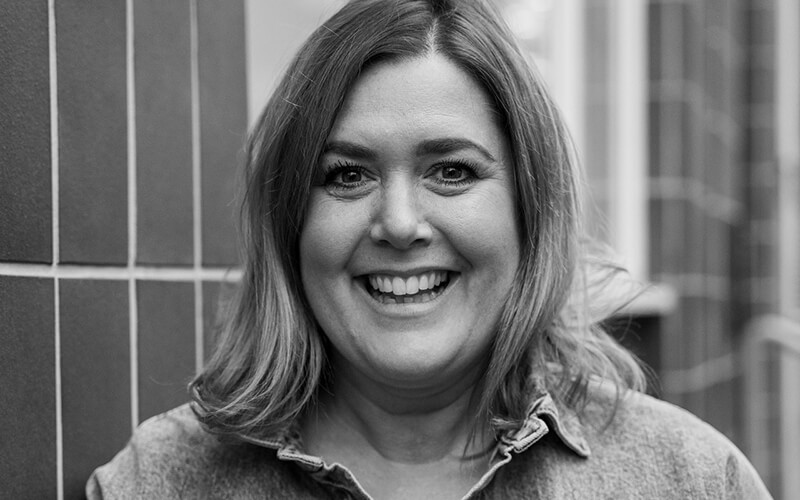By Amelia Shepherd, director of Growth at Wonder
There’s no denying that when approached with the right mindset, pitching can be an amazing catalyst for creativity. A rollercoaster of highs and lows that pushes teams to think outside the box, tackle new challenges and come up with fresh ideas.
I’ve always loved the thrill of pitching – diving into new brands, coming up with big ideas, and any excuse for a bit of pitch theatre, well, I’m there! But the constant pitching cycle can also be relentless and draining.
While pitching has huge potential to inspire, the way we currently do it often misses the mark.
Pitch slapped
The pitching process often suffers from a power imbalance, with clients holding all the cards.
From the outside, it might seem like the incumbent agency has the advantage but in reality, they often face the most pressure. Their deep knowledge of the project can limit their creativity, as they may hold back big ideas they know might be difficult to deliver. Plus, their pricing often reflects a more realistic view of what it takes to execute effectively.
If the incumbent is already the right fit, why not just give them the project and work together to make it even better? It could save time, cut costs, and lead to better results.
In other industries, winning work is handled differently. Imagine asking an architect to design your house for free – it would be laughable. Instead, you check their portfolio, seek recommendations, and review their pricing. Our industry should be no different. Agencies should win work based on their skills, experience, and reputation.
These days, most clients have a roster of agencies who’ve pitched to get on the list. Which is great – so why not use it more effectively? Forcing agencies through another pitch cycle for every project seems unnecessary. These agencies were chosen for their capabilities, fit and competitive pricing, so choose the right one for the project and get started.
Pitch perfect (almost)
If you must pitch, do it right.
It should feel like a two-way dialogue. Start by giving agencies a heads-up so they can prepare properly. Share a clear brief with a budget, give a decent response time and answer questions quickly. Offer a chemistry session and invite agencies to present in person. Be transparent about how many are pitching and if you can, share who’s pitching (most agencies know who they can and can’t compete against). Clearly define your success criteria to help agencies align their proposals and give a solid scorecard for decision-making.
The Pitch Positive Pledge, introduced in May 2022, was a great step towards improving pitch practices. With 336 companies signing up, it’s a move in the right direction. But without more agencies and brands on board, change is hard, but within our reach.
And, when the time comes to make a decision, don’t ghost. Instead, offer detailed feedback – both good and bad. This helps everyone understand what worked, what didn’t and what might work next time.
Pay to play
Pitching isn’t cheap. It takes a lot of time, money, and energy.
Agencies can spend a small fortune trying to stand out, making it tough for some to keep up. Smaller agencies often bring a new perspective and specialised skills that can deliver really unique and tailored work. But the high cost of pitching can hold them back.
By paying for pitches, clients not only make the process fairer and more commercially viable, but also show they value the creative effort involved. This levels the playing field and gives all agencies a fair shot at showcasing what they can do.
People buy people (not pitches)
Choosing a new agency is a lot like dating. At the end of the day, it’s not just about the pitch; it’s about the people behind it. Just like with dating, where compatibility and chemistry are key, getting to know the team can make all the difference.
Just as you would when looking at a dating profile, look at an agency’s past work, their style, and see if they’re a good fit for your brand. Instead of pitching, try a ‘paid first date’ where you pay the agency for their initial ideas. It’s a win-win: you get to see if you click, and they get paid for their effort.
If you need to go through a pitch, treat it like a series of meaningful dates. Chemistry and tissue sessions are great for understanding the team’s working style and making sure there’s a cultural fit. These steps will also help set the stage for a stronger face-to-face proposal presentation when the time comes.
And let’s be honest: most projects change once things are underway. Briefs shift, scopes evolve, and budgets fluctuate, so it’s all going to change anyway! What truly matters is finding an agency that can adapt and collaborate throughout the journey, much like finding a partner who can grow with you.
Pitch with purpose
Pitching has the potential to inspire and create, but only if we change how we do it.
By valuing creative work and paying for pitches, the process becomes fairer. Ideas are creative intellectual property (IP) that belong to an agency until they’re paid for. If a client wants to take the idea and find a cheaper way to execute it, that’s their call. But in my experience, a great idea done badly can be a disaster. The agency that came up with the idea usually cares the most about it and is invested in making it work.
Adopting better practices and valuing existing agency relationships can make pitching a positive and more productive experience for everyone involved.




















